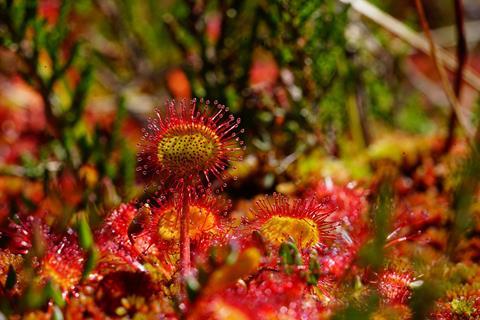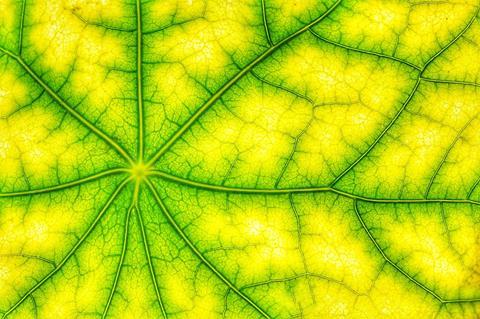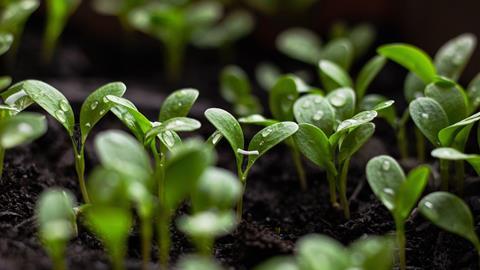Almost a quarter of the land on Earth is being used for agricultural purposes with latest reports indicating that approximately 3.8 billion people engage in agriculture. Attempts to increase food production to feed a rapidly growing world population by employing synthetic fertilisers and pesticides have not yet met the desired results.
The worldwide application of pesticides per area of cropland was 1.8 kg/ha as per an FAO report 2023. This indiscriminate use of synthetic fertilisers and pesticides has in fact negatively affected both the environment and human health. The Agricultural Health Study has produced some evidence of increased incidence of cancer of the prostate, lung, colon, pancreas, bladder, leukaemia, and multiple myeloma due pesticide use, as well as agricultural workers suffering from unintentional pesticide poisoning. To overcome these problems, a more efficient and sustainable agricultural production method needs to be adopted. The review published by Dr Manjusha and her team at Kerala University of Fisheries and Ocean Studies uncovers how microbe-based solutions – specifically yeasts – can be used as plant growth promoters for a more sustainable agriculture. The review opens up a new arena in agriculture and examines the multifarious plant growth-promoting traits of yeasts.
Promoted: AMI has teamed up with QIAGEN to help you get the highest yields from your soil DNA Extractions. Get your free guide here.
Plant growth promoting yeasts
Plant growth promoting yeasts (PGPY) have predominantly been isolated from the rhizosphere (the soil zone surrounding the plant roots) and phyllosphere (the aerial or above-ground parts of plants) of major crop plants such as maize, wheat, and corn. PGPY have also been recorded from the threatened, medicinal, insectivorous plant Drosera, and from the marine environment. There is also a report of genetically engineered strains of the oleaginous yeast Yarrowia lipolytica producing bioactive gibberellins, the phytohormones that are involved in plant development. This was done by optimising ent-kaurenoic acid production and creating pathways combining enzymes originating from both fungi and plants. Some of the common genera of yeasts reported to have multifarious plant growth-promoting capabilities include Candida, Rhodotorula, Debaryomyces and Cryptococcus.

For the isolation of PGPY, researchers have mainly used sediment and root samples from the rhizosphere and leaves from the phyllosphere. The media employed for PGPY isolation vary with the samples and the research teams, however Yeast Peptone Dextrose (YPD) medium is widely used for the isolation of PGPY.
As yeasts are Generally Recognised as Safe (GRAS) for field applications, their use as PGP agents has received the attention of researchers in the field of sustainable agriculture. If we are to be able to increase food production and feed the world’s growing population in a sustainable way, then we believe it is critical to further understand the plant growth-promoting traits of yeasts and their association with plants.
Plant growth promoting traits
Yeasts are capable of promoting plant growth, right from the tip of the root to the topmost portion of the shoot. Previous studies on the multifarious plant growth-promoting traits of yeasts found them capable of significantly increasing leaf number, leaf area, and chlorophyll concentrations. PGPY are able to colonise plant parts and benefit their hosts by modulating phytohormone production (Indole acetic acid, gibberellins, cytokinins, etc), improving soil fertility, increasing nutrient availability, enhancing resistance to abiotic stress, stimulating mycorrhizal root colonisation, and inhibiting phytopathogens.

Methods for the inoculation of PGPY
Another aspect our review explored was the inoculation methods of PGPY, which is a major factor that influences the establishment and persistence of yeast populations either on the plant parts or in the rhizosphere. The inoculation method selected is usually dependent on the host plant and the inoculum used. Inoculation can be performed using a single isolate or in combination with one or more isolates, in which case it is called co-inoculation. Upon co-inoculation of yeast with other microbes, they synergistically interact with each other and promote plant growth. There are different methods of inoculation for PGPY such as seed, root, soil, and foliar inoculation. Seed inoculation involves immersing the seeds whereas root inoculation involves immersing the roots in liquid microbial cultures of known concentration. In soil inoculation, plant growth promoting microbe (PGPM) is directly introduced into the soil. Binders are commonly used in the case of soil and seed inoculation in order to enhance the efficiency of the process. When aerial parts are sprayed with inoculums it is referred to as foliar inoculation. After inoculation these PGPM colonise the rhizosphere or the interior of the plant resulting in stimulation of plant growth and the plant’s tolerance against abiotic stresses.
The choice of the inoculation method has been found to influence the effect of the plant growth-promoting traits of yeasts on the host plants. Plant exudates have been found to vary with the plants genetic makeup and age. Thus these exudates are found to be critical determinants of PGPM colonisation and in turn plant growth promotion. The review revealed that the ideal method of introducing PGPY would be seed and/or soil inoculation. However the selection of the inoculation method must be based on sound knowledge of the plant growth stages and species. The successful inoculation also depends on the environmental conditions, quality and quantity of the inoculum, and microbial adaptations to the new environment.
Though bacterial PGP have been commercialised, PGPY are yet to do so. Most of the studies carried out on PGPY are either in vitro or pot level. There are only negligible field trail reports using PGPY. Yeasts are actually a new entrant in the field of sustainable agriculture and in-depth studies need to be carried out prior to commercialisation.

Novel sources of yeast
Mangroves or mangal are intertidal ecosystems located in the tropical and sub tropical regions of the world. The term is also used refer to the unique vegetation comprising of trees and shrubs that are adapted to tolerate saline conditions and low-oxygen conditions prevailing in the waterlogged sediments in the mangroves. Mangroves are hotspot of fungal diversity that includes unicellular yeasts. Like most microbes from mangroves, manglicolous yeasts too are adapted to tolerate fluctuating environmental conditions and also produce a variety of novel compounds with applications in the fields of food, feed pharmaceuticals, environment, agriculture etc. Our team had been exploring the biotic potentials of manglicolous yeasts. “Nimsi is currently investigating the multifarious plant growth-promoting traits of yeasts isolated from mangrove ecosystem and has made some promising discoveries. We are currently working on sharing her findings with the world,” Dr K. Manjusha said.

“Plant growth-promoting yeasts (PGPY), the latest entrant for use in sustainable agriculture” appears in the Journal of Applied Microbiology and can be found here.








No comments yet